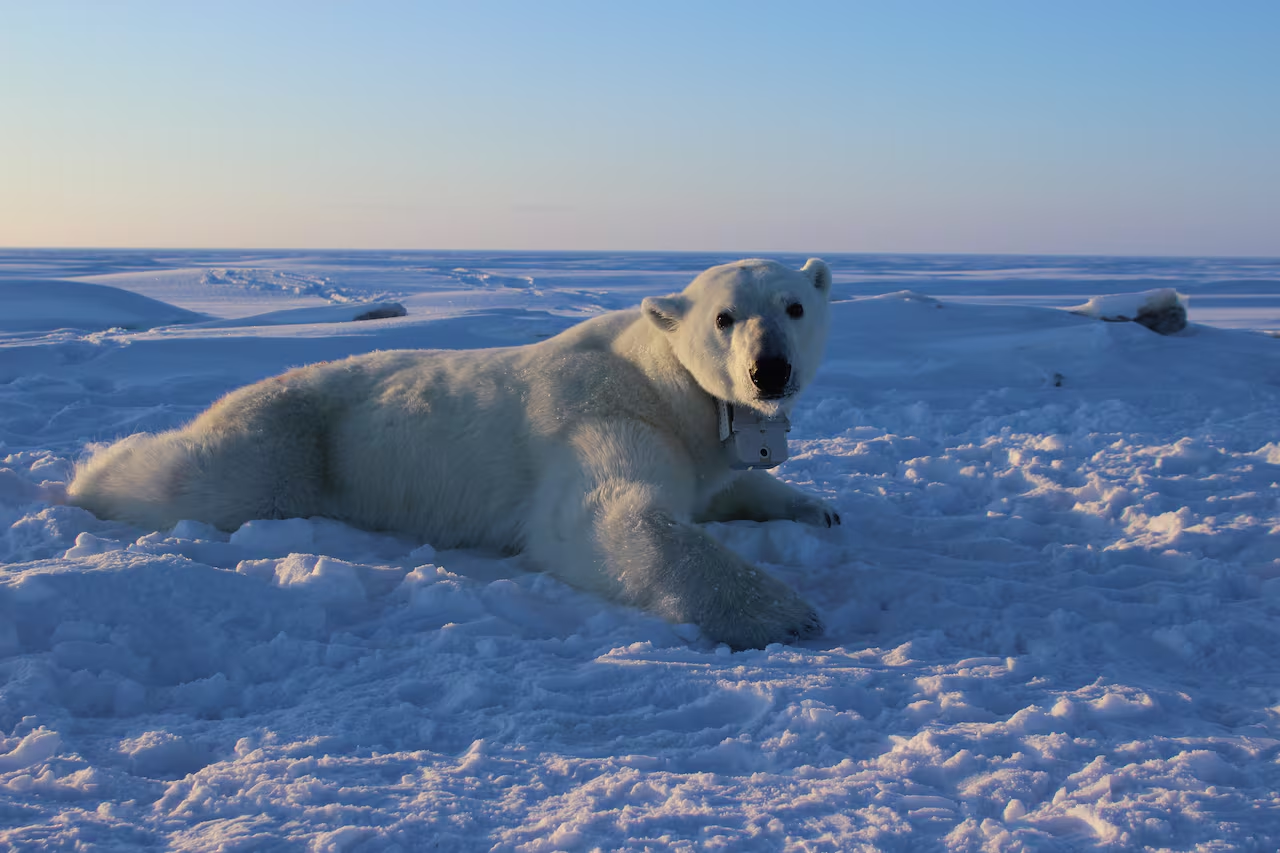The Polar Bear: The Majestic Apex Predator of the Arctic
Polar bears, the largest land carnivores on Earth, are iconic symbols of the Arctic. With their striking white fur, incredible strength, and remarkable adaptability, these magnificent animals are perfectly equipped to survive in one of the harshest environments on the planet. Despite their awe-inspiring presence, polar bears face numerous challenges due to climate change, making them one of the most vulnerable species today. Let’s explore some fascinating facts about polar bears that highlight their unique adaptations and the threats they face in the modern world.
1. Top of the Food Chain: The Ultimate Arctic Predator
Polar bears sit at the top of the Arctic food chain, primarily hunting seals for their high-fat content. They use sea ice as a platform to stalk and ambush their prey, often waiting near breathing holes or breaking into seal dens to catch young pups. A polar bear’s diet consists almost exclusively of seal blubber, which provides the necessary energy and insulation to survive in the extreme cold. Their role as apex predators is crucial for maintaining the balance of the Arctic ecosystem.

2. Built for the Cold: Thick Fur and a Layer of Fat
Polar bears are perfectly adapted to the frigid Arctic climate. They have a thick layer of blubber, up to 4.5 inches (11.5 cm) thick, which insulates them against the cold and helps them stay buoyant while swimming. Their fur, which appears white, is actually made up of transparent, hollow hairs that trap heat and provide excellent camouflage against the ice and snow. Underneath, their skin is black, absorbing and retaining the warmth from the sun’s rays, an adaptation that helps them survive freezing temperatures.
3. Incredible Swimmers: Covering Vast Distances in Search of Ice
Polar bears are strong swimmers, capable of traveling long distances between ice floes in search of food. They can swim at speeds of up to 6 miles per hour (9.7 km/h) and have been known to cover distances of over 60 miles (97 km) in a single journey. Their large, powerful forepaws act like paddles, propelling them through the icy waters, while their thick layer of fat keeps them warm. As sea ice continues to diminish due to global warming, polar bears are forced to swim even greater distances, putting immense stress on their bodies.
4. Keen Sense of Smell: Detecting Prey from Miles Away
Polar bears have an extraordinary sense of smell, allowing them to detect seals from up to a mile away and under several feet of compacted snow. They rely on this heightened sense to find food in a landscape where prey is often hidden from view. This ability is crucial for hunting, as polar bears spend much of their time searching for seals, which are their primary food source. A polar bear’s nose is one of its most vital survival tools in the Arctic’s vast and sparse environment.

5. Solitary but Powerful: The Life of a Lone Hunter
Polar bears are generally solitary animals, except for mothers with cubs and during the mating season. They are known for their incredible patience, often waiting hours or even days by seal breathing holes. Their hunting strategy relies on stealth, strength, and precision, and a successful hunt is crucial, as polar bears can go without eating for several days or even months during lean times. Despite their solitary nature, polar bears play a significant role in the ecosystem, influencing the populations of other Arctic species.
6. The Struggle for Survival: Impact of Climate Change
Climate change is the greatest threat facing polar bears today. The melting of sea ice due to rising global temperatures has drastically reduced their hunting grounds, forcing them to travel longer distances and expend more energy to find food. The loss of sea ice also leads to more frequent interactions with humans as polar bears search for alternative food sources, often resulting in conflict. Conservation efforts are crucial to protect these magnificent animals and their habitat, ensuring that future generations can witness the beauty and power of the polar bear.
7. Cubs: Raising the Next Generation of Arctic Giants
Polar bear cubs are born blind and hairless in maternity dens, usually during the winter months. Mothers provide all the care, nursing their cubs with milk rich in fat to help them grow quickly. The cubs remain in the den for the first few months of life, sheltered from the harsh Arctic conditions. After emerging in spring, the mother teaches her young to hunt and survive in the challenging environment. The bond between a polar bear mother and her cubs is strong, and she will fiercely protect them from any threats.
Final Thoughts
Polar bears are more than just icons of the Arctic; they are a vital part of the region’s delicate ecosystem. Their unique adaptations make them one of the most fascinating creatures on Earth, showcasing nature’s ability to thrive even in the harshest conditions. However, the challenges posed by climate change highlight the urgent need to protect these magnificent animals and their rapidly changing habitat.
From their powerful hunting techniques to their incredible swimming abilities, polar bears are true survivors of the Arctic. Understanding and conserving these remarkable animals is essential not only for their future but also for the health of the entire Arctic ecosystem.






